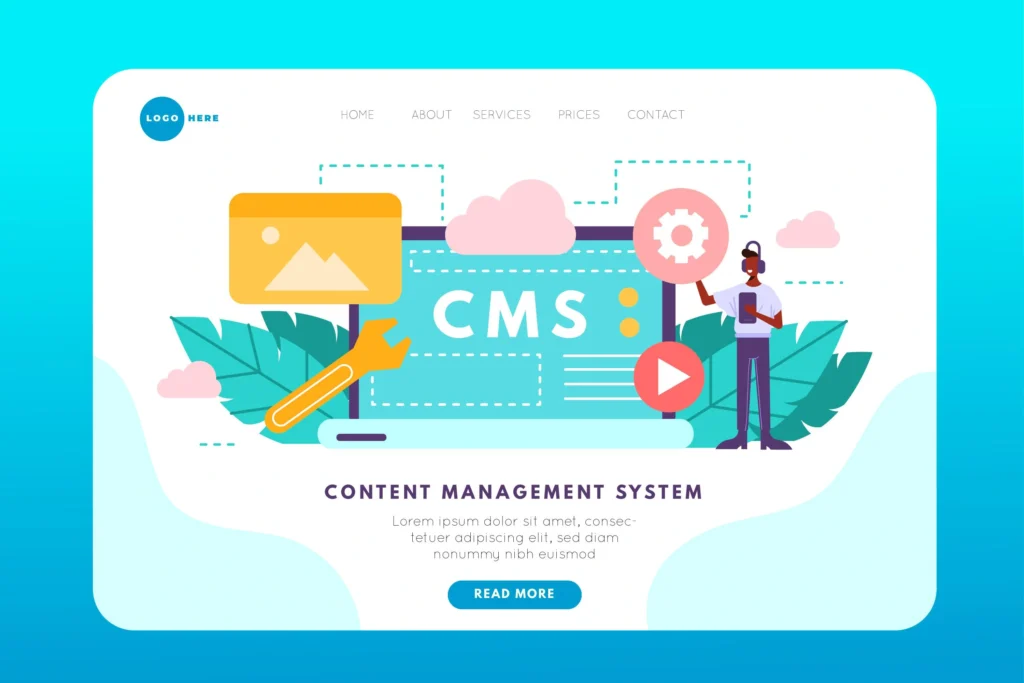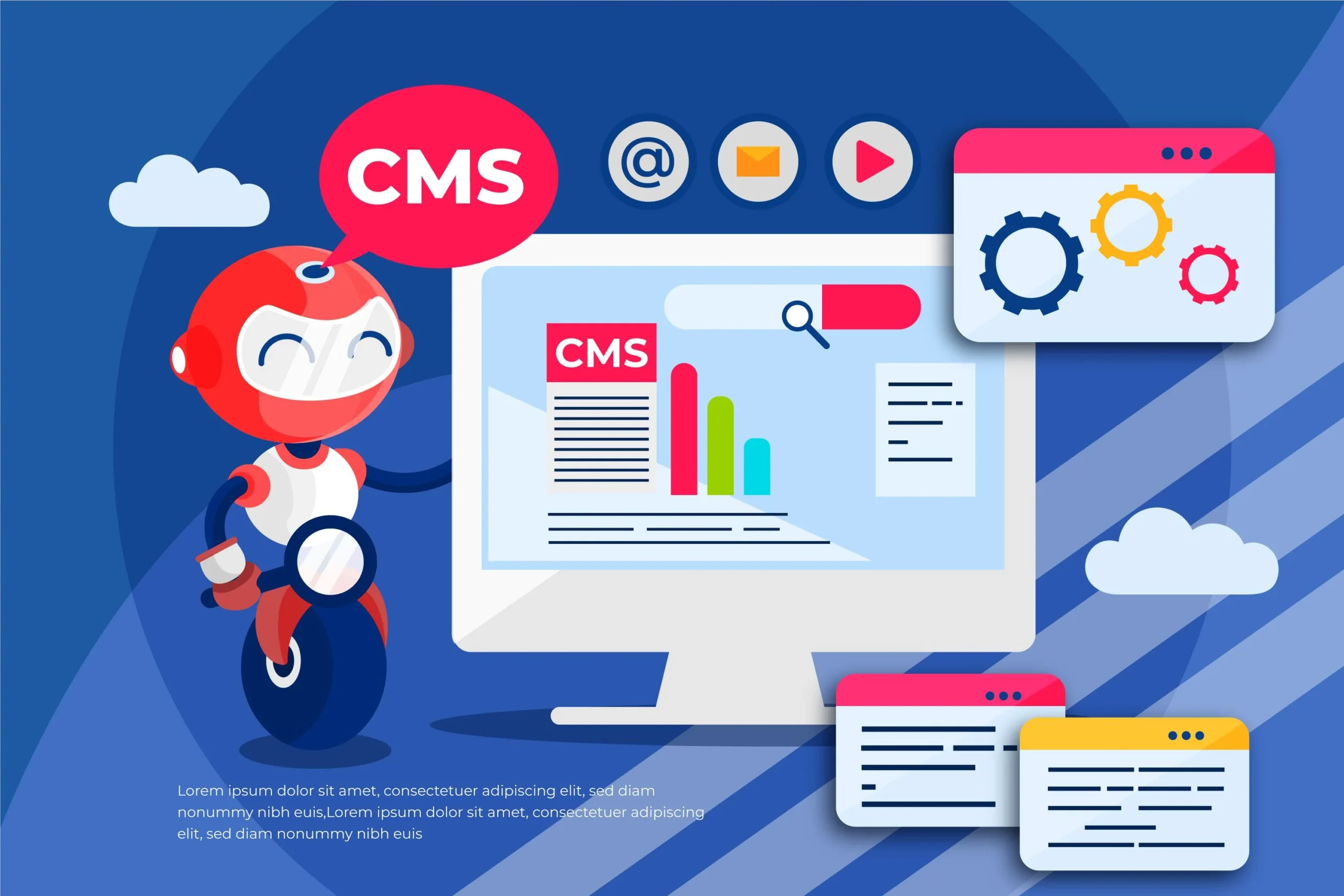Is your website struggling to keep up with the pace of digital innovation? Are you looking to deliver content seamlessly across websites, mobile apps, smartwatches, and even digital billboards? If so, the traditional monolithic CMS might be holding you back. Enter the headless CMS —a modern content management architecture revolutionizing how we create and deliver digital experiences.
In this ultimate guide, we’ll demystify what a headless CMS is, how it works, its key benefits, and why it might be the perfect solution for your next project.

What is a Headless CMS? Breaking Down the “Headless” Concept
To understand a headless CMS, it helps to first understand a traditional CMS like WordPress or Drupal.
A traditional CMS is often described as “monolithic” because it couples the back-end (the content repository and management interface, aka the “body”) with the front-end (the presentation layer, aka the “head”). It’s a all-in-one system that handles both storing your content and defining how it looks on a webpage.
A headless CMS decouples these two parts. It is a back-end-only content management system. It acts purely as a content repository that makes content accessible via APIs (Application Programming Interfaces), most commonly a RESTful or GraphQL API.
The “head” (the website, app, or other digital experience) is built separately using modern frameworks like React, Next.js, Vue.js, or Angular. This front-end “head” simply makes an API call to the headless CMS to fetch raw content and then displays it as designed.
In simple terms: In a headless setup, your content is created once and delivered to everywhere—without being tied to a single presentation layer.
How Does a Headless CMS Work? A 3-Step Process
The workflow of a headless content management system is straightforward:
- Create and Manage: Content teams create and manage all content—articles, product data, images, videos—within a user-friendly admin interface of the headless CMS. This experience is often cleaner and more focused than a traditional CMS dashboard.
- Store and Deliver via API: The content is stored in a structured, raw format (usually JSON) within the CMS database. When needed, the front-end application calls the CMS’s API to request this structured content.
- Display on Any Front-end: The developer-built application (the “head”) receives the content via the API and renders it according to the site’s or device’s design. The same blog post can be displayed on a website, a native mobile app, and a smartwatch app, all from a single source of truth.
Key Benefits of Adopting a Headless CMS Architecture
Moving to a headless content management system offers significant advantages for developers, content creators, and businesses alike.
1. Ultimate Flexibility and Omnichannel Publishing
This is the biggest sell. Your content is no longer locked into a single website. You can push it to iOS and Android apps, static site generators (like Gatsby or Jekyll), smart devices (IoT), digital signage, and any new platform that emerges in the future.
2. Enhanced Developer Experience
Developers love headless CMS because they aren’t constrained by the themes and templates of a monolithic system. They can use their favorite modern tools and frameworks (React, Vue, Svelte, etc.) to build fast, interactive, and beautiful front-ends without wrestling with CMS-specific code.
3. Improved Performance and Security
Since the front-end is completely separate, it can be deployed as a static site or on a global CDN, resulting in blazing-fast load times. The decoupled nature also reduces the attack surface. The content delivery API is often read-only, and the admin backend can be hidden behind a firewall, making it more secure than a traditional CMS with a public-facing admin login.
4. Future-Proof Your Content
Technology changes fast. A headless CMS ensures your valuable content remains reusable. If you want to redesign your website in five years, you don’t need to migrate your content—you just build a new “head” and point it to the same API.
5. Streamlined Content Workflow
Content teams can work independently in a focused environment, while developers build the presentation layer simultaneously. This parallel workflow drastically reduces development bottlenecks and speeds up time-to-market.
Is a Headless CMS Right for You? Key Use Cases
While powerful, headless isn’t a one-size-fits-all solution. It excels in these scenarios:
- Jamstack Websites: Headless CMS is a core component of the Jamstack architecture.
- Multi-Platform Applications: Businesses that need to publish content on a website, a mobile app, and other digital touchpoints.
- E-commerce Platforms: Using a headless CMS for non-product content (blogs, guides) alongside a headless e-commerce platform like Shopify Plus or Commercetools.
- Complex Digital Experiences: Large-scale projects requiring highly customized user interfaces and integrations.
- Content-Rich Mobile Apps: Apps that rely heavily on dynamic, updatable content.
Potential Drawbacks to Consider
- No Built-In Preview: Previewing content exactly as it will appear live can be more complex to set up than in a traditional CMS.
- More Development Resources Required: You need developers to build the front-end from scratch. You can’t just install a theme.
- Potential for Higher Cost: While many headless CMS options have generous free tiers, costs can scale with API calls and content entries.
Popular Headless CMS Platforms to Explore
The market is rich with excellent options, both open-source and commercial:
- Strapi: A powerful open-source Node.js headless CMS that is self-hosted.
- Contentful: A leading enterprise-grade, API-first composable content platform.
- Sanity.io: A highly customizable platform with a real-time collaborative environment.
- Prismic: A developer-friendly SaaS headless CMS with a strong focus on slices and reusable components.
- WordPress as a Headless CMS: Yes, it’s possible! You can use the WordPress REST API to decouple the WordPress backend from a custom front-end.
Getting Started with a Headless CMS
- Define Your Needs: What channels will you publish to? What is your team’s technical skill level?
- Choose a Platform: Start with a developer-friendly option like Strapi or Sanity.io for a first project.
- Develop Your Front-end: Build your website using a framework like Next.js or Gatsby.
- Connect via API: Fetch your content from the headless CMS API and render it in your application.
Conclusion: Embrace the Future of Content Management
The digital landscape is no longer just about websites. It’s about delivering consistent, engaging content experiences across a vast array of devices and platforms. A headless CMS provides the agility, performance, and flexibility required to thrive in this multi-channel world.
By decoupling content from its presentation, you empower your developers to build cutting-edge experiences and enable your content teams to manage content more efficiently—all while future-proofing your digital assets for whatever comes next.
Ready to decouple your content? Start exploring headless CMS options today and unlock the true potential of your content strategy.
